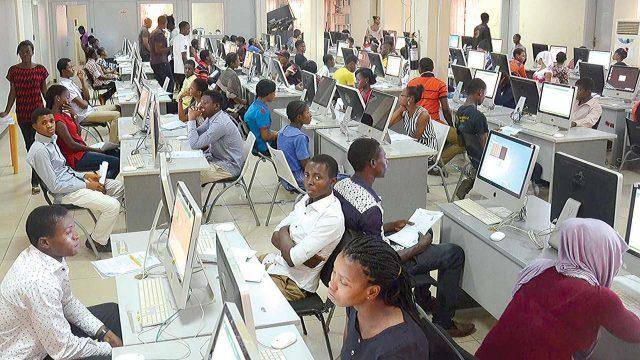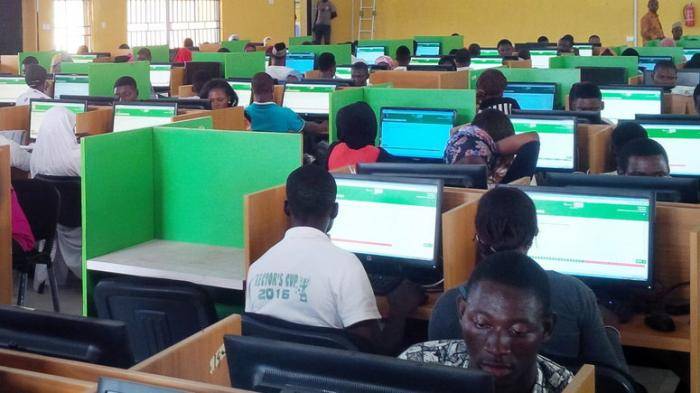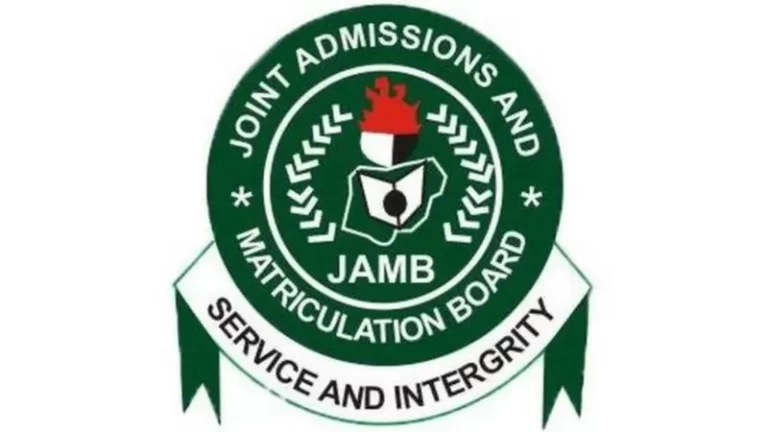Waec

Geography-Obj!
1ADBCACCACD
11ADDABCCAAD
21BBCCAACDDD
31CACCDDDACC
41BBCCDCDDAC
Completed!!!!
GEOGRAPHY-THEORY-ANSWERS!
BONUSES.
(6)
(6b)
(i) High pressure on social amenities: As a result of large number of people living in Lagos owing to development, social amenities like electricity, roads are over demanded
(ii) Housing problem: There are shortages of housing compare to the large number of people living over there
(iii) High cost of food/High cost of living: There are high cost of food because food supply are usually lower compare to the large number of people
(6c)
(i) Provision of social amenities
(ii) Construction of government estate
(iii) Increase in food supply
=============================
(4)

(4b)
(i) Creation of employment opportunity
(ii) Revenue generation to the government
(iii) Industrialisation
(iv) Attraction of foreign investors
(4c)
(i) Export of goods: Goods produced in Nigeria can be exported into another countries in sea port
(ii) Transportation of goods: Goods produced from other countries can be imported into Nigeria
(iii) Fishing: The development if port promotes intensive fishing around the port
=============================
(5a)
(i) Root and tuber crops
(ii)Cereal crops
(5b)
(i)It is very common in rural areas with abundant farmlands.
(ii) It involves small holdings of farmlands.
(iii) Food crops like yam, cassava and maize are grown.
(iv)Farmlands are left to fallow after one or two years of cultivation.
(v) A farmer returns to the farmland after a fallow period of 2-5 years.
(5c)
(i) It leads to wastage of land which could have been used by allowing it to lie fallow
(ii) It leads to land fragmentation due to increase in population
(iii)It allows for cultivation of only one seasonal crops like maize,rice and millet
(iv) It does not lead to mechanisation of farms i.e it does not allow for large scale mechanised farming
=============================
(1a)
(i)Road Transportation
(ii)Rail Transportation
(iii)Water Transportation
(iv)Air Transportation
(1b)
(i) To supply raw materials to other parts of the country e.g East African railway.
(ii) To link important cities and facilitate movement of people e.g. Abidjan Ouagadougou.
(iii) To link different regions, thus, promoting inter-regional trade e.g. North and South of Nigeria.
(iv) To open up new areas for major crop production e.g Jos- Maiduguri
(v)To tap resources such as agricultural,mineral and forest. For example , rail network such as Minna,Laura Namoda rail network
(1c)
(i)Deliberate effort should be made towards the expansion of the Raul network ,inorder to generate growth in the economy. Effort should be geared towards improvement of the efficiency of the rail network
(ii) Government should make capital available to railway authorities to enhance efficiency. Training and retraining of personnel should be undertaken from time to time
(iii) Development of international rail transport system should be embarked upon to spur international trade. There should be improved management techniques: new innovations in management should be encouraged.
(iv)Adoption of standard gauges is very important , so as to enhance operational efficiency.Also There should be Faster engines and coaches to facilitate east and quick movement.
=============================
(2a)
Urbanization refers to the population shift from rural to urban areas, the corresponding decrease in the proportion of people living in rural areas, and the ways in which societies adapt to this change. WHILE Population density is a measurement of population per unit area, or exceptionally unit volume; it is a quantity of type number density. It is frequently applied to living organisms, most of the time to humans. It is a key geographical term.
(2b)
(i) High population density: This problem of high population density is caused due to the heavy rate of migration from rural areas. The rapid population growth has led to an acute shortage of dwelling units which resulted to; overcrowding, traffic congestion, pollution, housing shortages, high rents, poor urban living conditions, low infrastructure services, poverty, unemployment, and poor sanitation which has become pervasive and indeed high crime rate.
(ii) Inadequate infrastructures: One major serious aspect of the urban problem is the poor state of the infrastructures. Some developing countries are still faced with bad road network, lack of power supply, inadequate water supply and some basic amenities.
(iii) Lack of affordable housing: This has led to confrontations with well organized squatters, who take over unoccupied buildings to live rent- free or prevent demolitions. Which has brought about, lack of housing vacancy rate, due to the rapid job growth and housing costs that has increased.
(iv) Flooding: Flooding is a very serious problem faced in urban areas, especially in developing countries, during the rainy seasons. The drainage is poorly constructed leading to difficulty in accessing the roads due to the flood leading to the flood disaster in some developing countries.
(2c)
(i) Building Sustainable and Environmentally-friendly Cities: Governments should pass laws that plan and provide environmentally sound cities and smart growth techniques, considering that people should not reside in unsafe and polluted areas.
(ii) Provision of Essential Services: Urban stakeholders must ensure all populations within the urban areas have access to adequate essential social services namely education, health, sanitation and clean water, technology, electricity, and food.
(iii) Creation of More Jobs: To lessen the negative effects of rapid urbanization while at the same time conserving natural ecosystems, private investments should be encouraged so as to utilize natural resources and create more job opportunities.
(iv) Population Control: Key stakeholders in urban areas must provide campaigns and counseling for effective medical health clinics and family planning to help reduce the high rates of population growth.
=============================
Completed!.
RECOMMENDED TOPICS
- JAMB 2025 UTME/DE registration document – step-by-step on how to apply for UTME and DE

- JAMB postpones 2025 UTME Registration to February 3rd

- JAMB Officially Announces 2025 UTME Registration, Exam, Mock Dates, Cost and Important Details

- The official reading novel for Jamb 2025 is Lekki Headmaster

- Subjects for Computer Science in JAMB for Guaranteed Success


